- Portfolio
-
Services
Product DevelopmentFocus on the core idea and market fit while we masterfully handle user-focused product design.Learn moreEngineeringLeverage cutting-edge technology to address customer challenges with expert guidance.Learn moreAI consultingEmbrace the future of AI-driven innovation and thrive in a rapidly evolving digital landscape.Learn moreGrowth MarketingEngage targeted audiences and meet business goals through strategic marketing solutions.Learn more
- Company
- Insights
-
Areas of expertiseProduct DevelopmentFocus on the core idea and market fit while we masterfully handle user-focused product design.EngineeringLeverage cutting-edge technology to address customer challenges with expert guidance.AI consultingEmbrace the future of AI-driven innovation and thrive in a rapidly evolving digital landscape.Growth MarketingEngage targeted audiences and meet business goals through strategic marketing solutions.
Outsmart AI Search Algorithms: 5 Generative Engine Optimization Techniques
Author

Nadia Aukhukova
Content Lead
I craft B2B content that blends sales objectives with brand storytelling, strengthens SEO, and amplifies expert voices.
- The decline of traditional SEO
- How to do Generative Engine Optimization
- Implement structured data (Schema)
- Simplify content for natural language processing
- Build brand authority
- Shift focus from keywords to answering user queries
- Create rich media content
- How to measure success in GEO
- Final thoughts
As AI chatbots begin to replace familiar search experiences, this shift is quietly prompting brands to pursue new strategies to protect their visibility. Generative Engine Optimization (GEO) is one such approach — emerging not to eliminate, but to complement traditional SEO. In this piece, we’ll explain how Generative Engine Optimization works and how to align your content strategy with it.
Key Takeaways
- AI search traffic is surpassing that of traditional search, with AI summaries (like Google’s AI Overview) placed above blue links.
- In relation to AI Overviews, CTR has declined by 34.5% for informational queries.
- User-Generated Content (UGC) and brand mentions have a disproportional impact on your visibility in AI searches.
- Traditional SEO metrics such as keyword rankings are becoming less relevant, instead AI visibility and brand authority are becoming the most important KPIs.
The Decline of Traditional SEO
SEO is not obsolete, but its footprint is shrinking. Google’s AI-powered summaries (e.g. SGE’s AI Overviews ) often appear at the very top of search results, above the classic blue links, siphoning away clicks. In fact, the presence of an AI Overview (AIO) has been correlated with a 34.5% drop in click-through rate (CTR) for the top organic pages.
Looking ahead, Gartner is predicting that global search engine volume will decline by 25% by 2026, meaning search marketing will give up a large percentage of the market to AI chatbots and other virtual agents.
What’s Happening to Brands
The large publishers are feeling the squeeze. Prominent sites like Business Insider, Forbes, and Bloomberg are experiencing significant drops in visibility, with YoY organic traffic declines of 36% to 62%, according to Ahrefs.
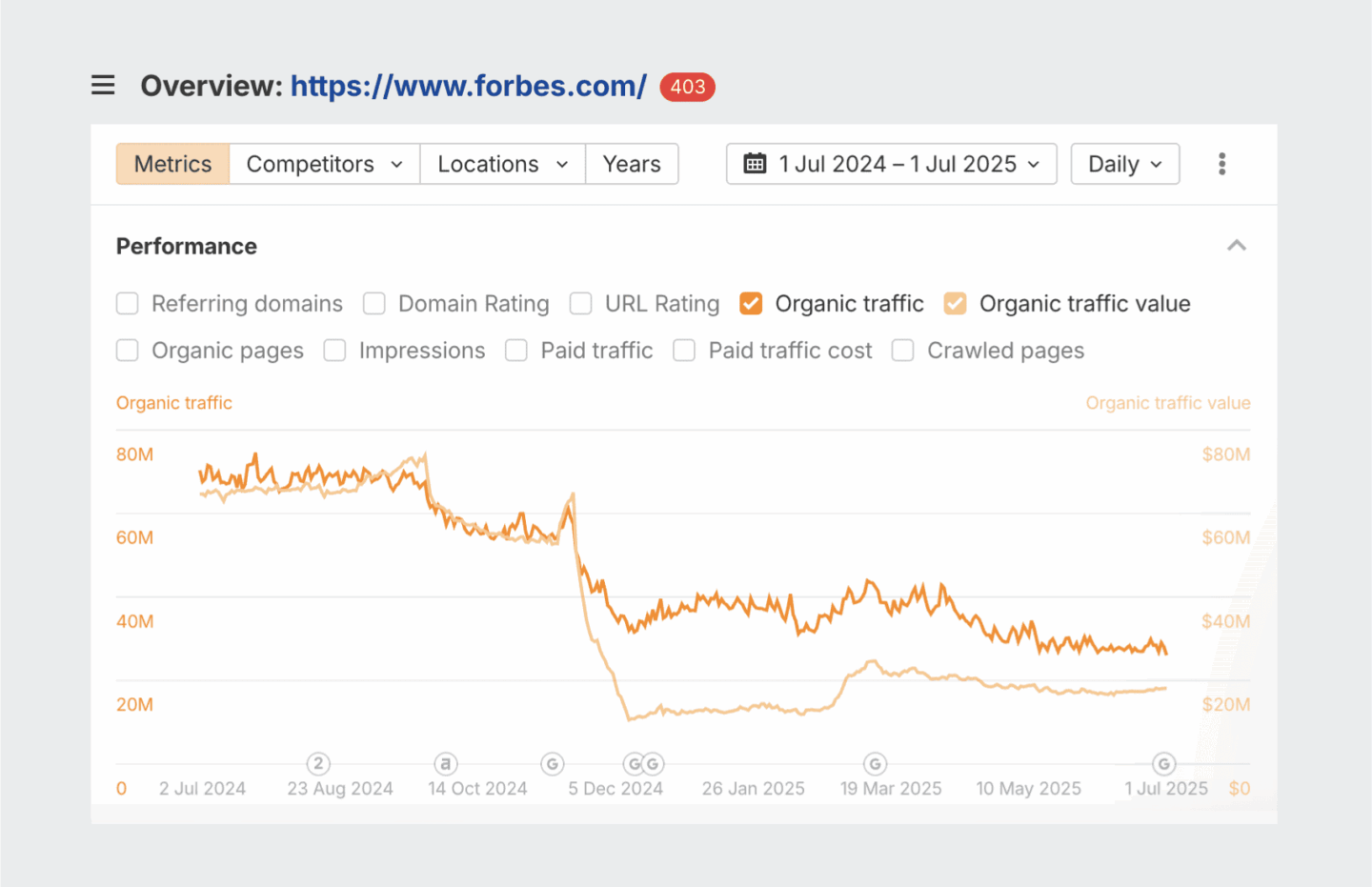
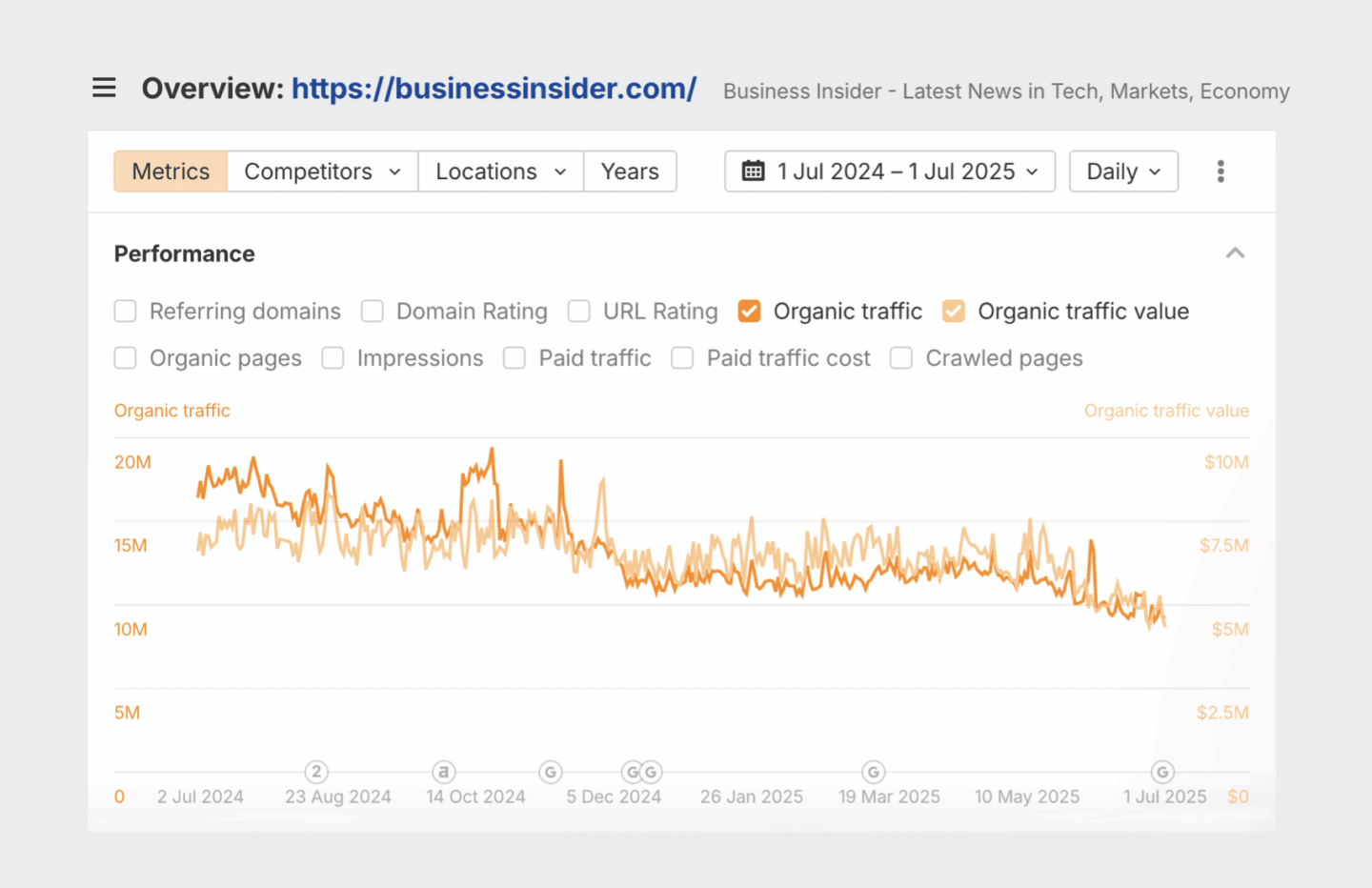
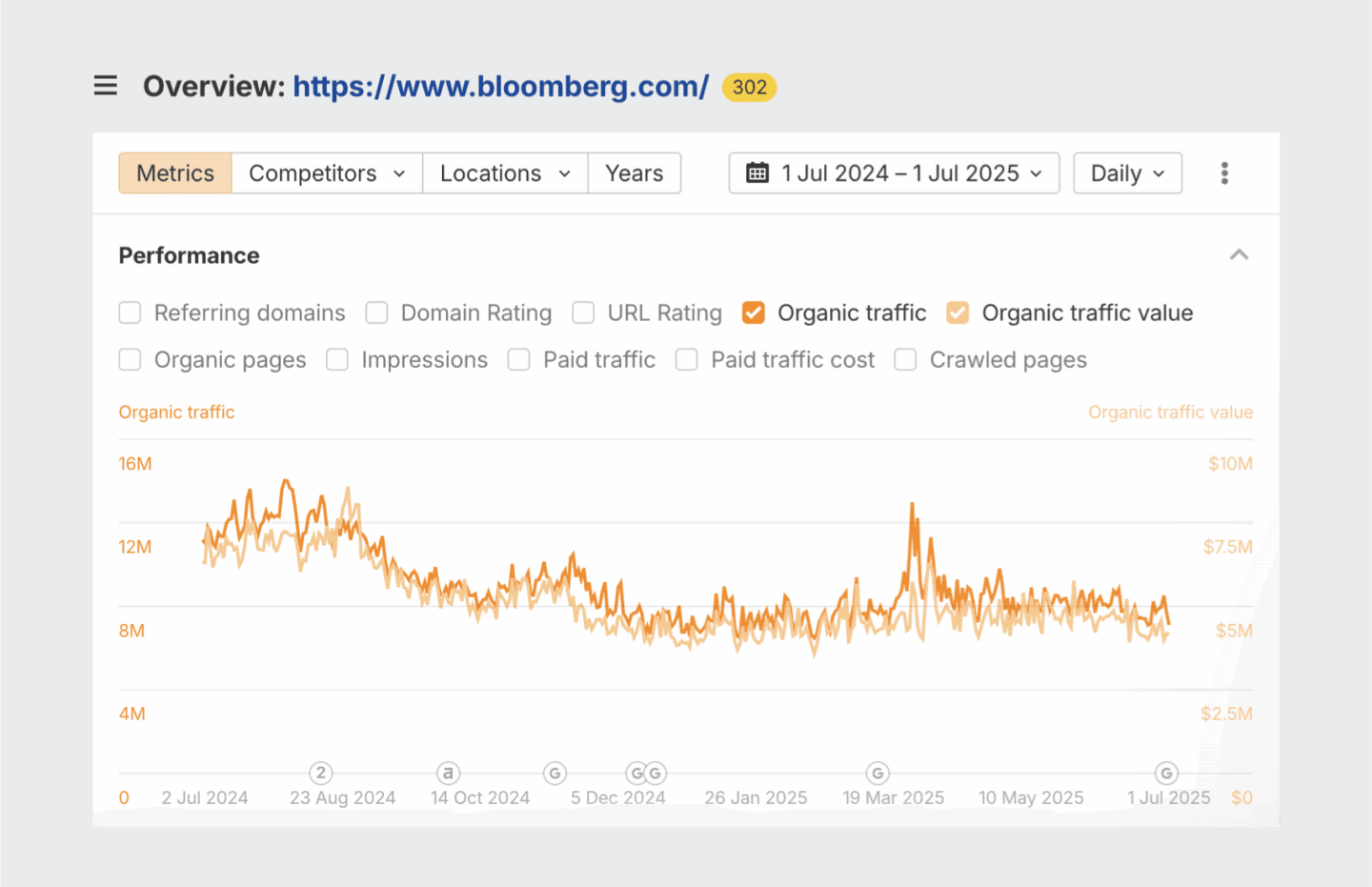
Even though Forbes still appears in roughly 6% of links cited in AI Overviews and AI chatbots like ChatGPT, that visibility hasn’t prevented a 62.92% decline in YoY traffic – from 70 million visits in July 2024 to just 26 million by July 2025.
This shift is a wake-up call for marketers: AI-driven search is disrupting the old SEO model and changing how we measure success in search.
SEO vs. GEO: Understanding Generative Engine Optimization
In contrast to traditional SEO, which focuses on keywords and backlinks, Generative Engine Optimization (GEO) revolves around structured data and signals of expertise, authority, and trustworthiness (the E-A-T principles).
Although the approaches differ, there remains a correlation between traditional search rankings and AI visibility. This relationship becomes clearer through the analysis below.
The Correlation Between Traditional Search and AI Ranking
AI systems, in one way or another, reflect the rankings found in traditional search engines. However, each AI system applies its own method for content selection and citation.
- OpenAI’s ChatGPT (when using the SearchGPT web mode) leans heavily on Bing’s index – over 87% of ChatGPT’s cited sources matched Bing’s top results, whereas only 56% matched Google’s.
- Perplexity AI strongly mirrors Google’s rankings, with one study finding a 91% overlap with Google’s top 10 results, according to Semrush.
- Google’s own AI Overviews often pull in content that isn’t in the top organic positions – more than half of AI Overview answers don’t include the #1 ranked result.
In other words, ranking #1 in traditional search doesn’t guarantee prominence in AI-driven results. Therefore, it’s essential to adopt new strategies. Below, we highlight five actionable methods to boost your content’s prominence in AI search.
How to Implement Generative Engine Optimization
1. Use Structured Data (Schema) to Help AI Understand Your Content
Just as good SEO involves technical optimization, GEO benefits from a technically sound website. Structured data markup (schema) provides a standardized format to describe your content (e.g., defining FAQs, how-to steps, product attributes) in a way that search engines and AI can quickly parse.
Apply schema markup to common content types
Identify content on your site that can benefit from schema, such as FAQs, how-to guides, products, articles, reviews, etc.
Implement relevant schema tags (using vocabularies from Schema.org) in your HTML. For example, a how-to article should use HowTo schema, an FAQ page should use FAQPage schema, and so on.
Leverage tools and plugins
You don’t have to write schema JSON-LD from scratch. SEO plugins like Yoast SEO (for WordPress) or generators like ChatGPT’s code interpreter and Schema.org’s markup tool can assist in creating proper schema code for your pages.
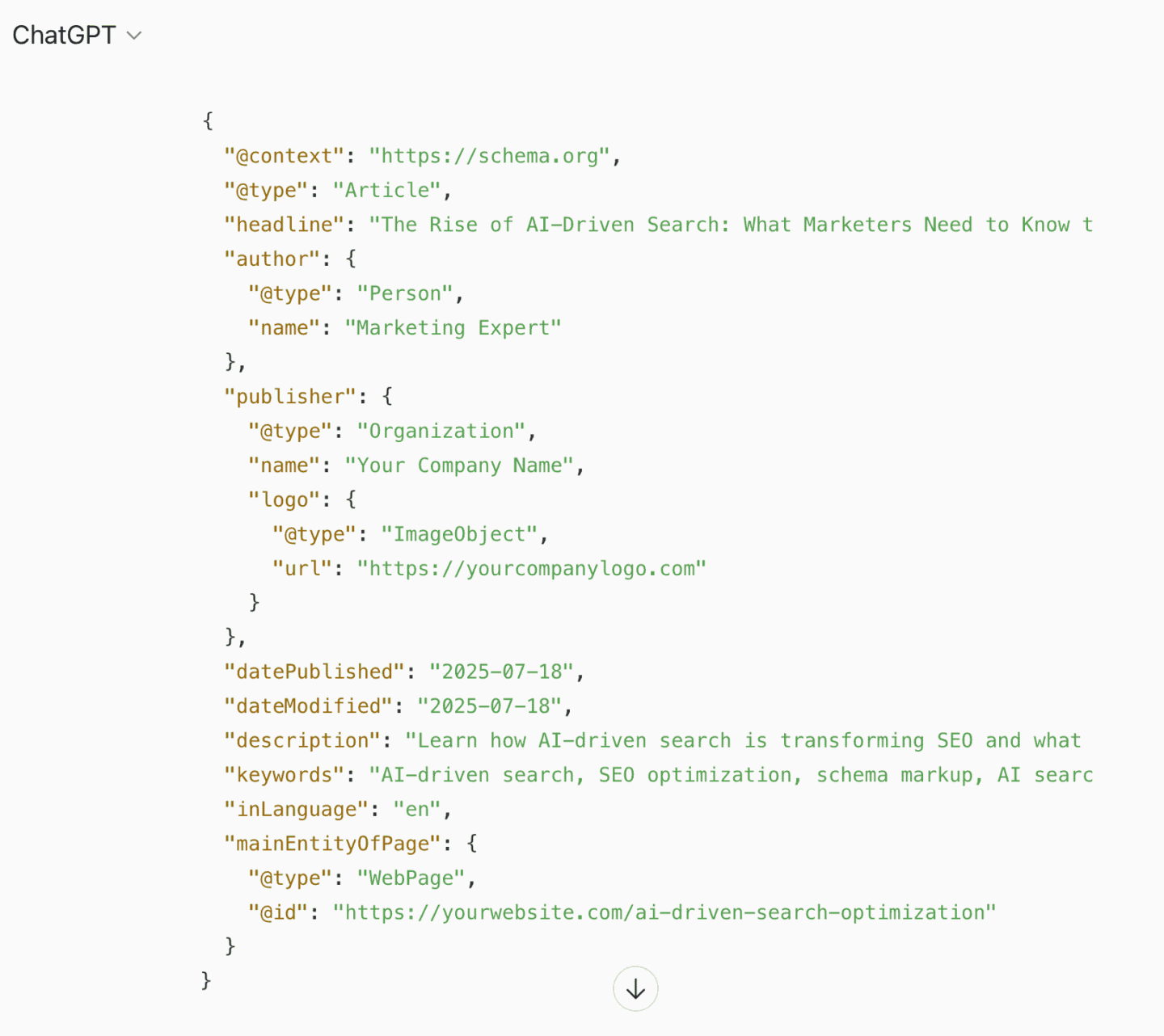
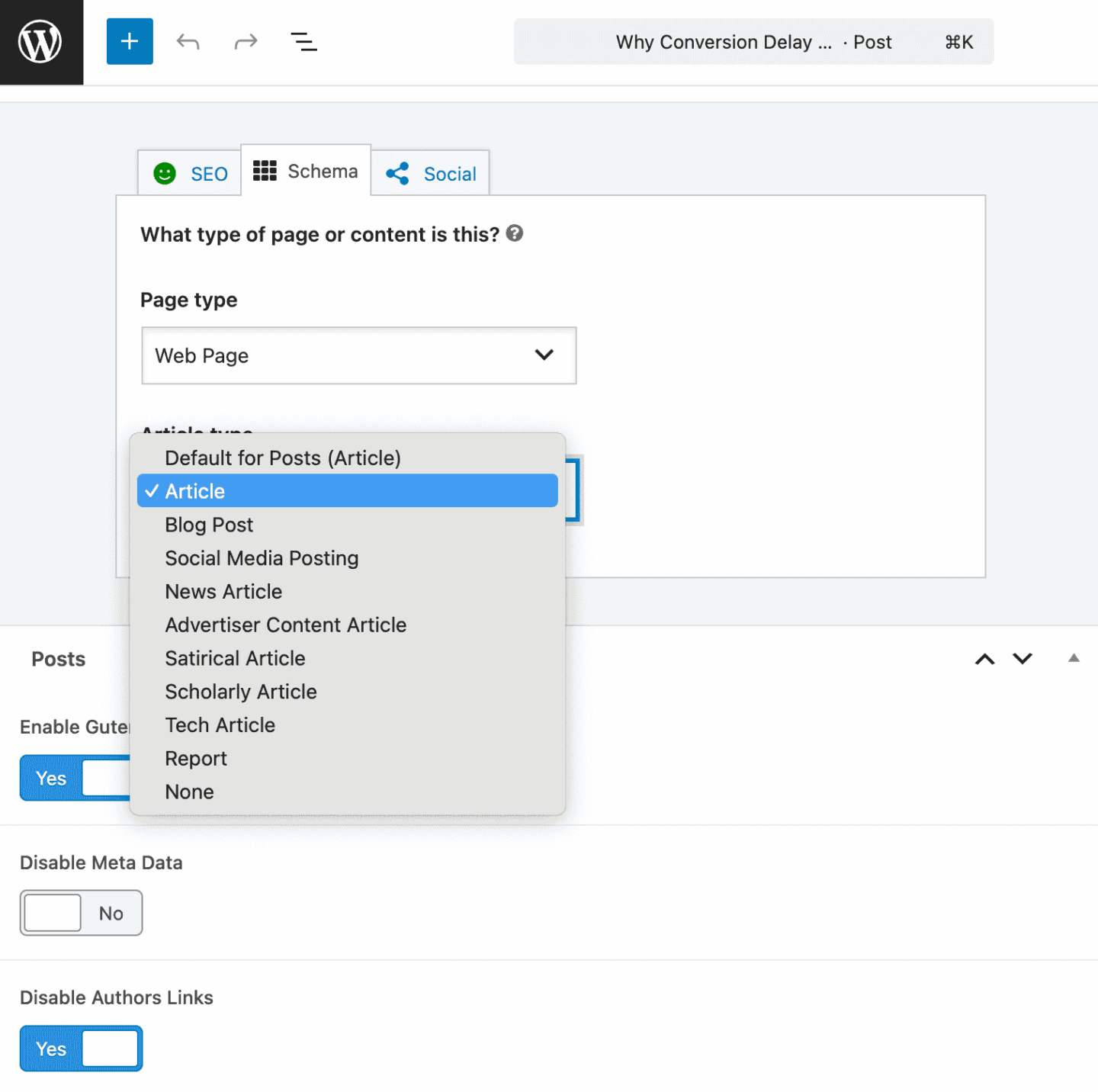
Test your schema
After embedding the schema, use Google’s Rich Results Test or Schema Markup Validator, as well as Bing’s Webmaster Tools Structured Data tester, to ensure your markup is correctly recognized.
2. Simplify Content for Natural Language Processing
AI systems use natural language processing (NLP) to read and interpret web content. To make your content more AI-friendly, optimize your writing style and format:
- Write in short, clear sentences: Long, complex sentences can confuse NLP models (and human readers, too). Aim for sentences under ~20 words and avoid unnecessary jargon.
- Use descriptive headings and subheadings: Organize your content with a logical heading hierarchy (H2s, H3s, etc.) that explicitly signals the topic of each section. Try phrasing subheadings as questions or brief statements that align with user queries.
- Break up text with bullet points and steps: Walls of text are unfriendly to AI extraction. Whenever you have a list of items or a process to describe, use an ordered or unordered list format.
Example: A great example is WebMD: their articles often use patient-friendly language, with lots of subheadings (“Symptoms,” “Treatment,” “When to See a Doctor”), bullet-pointed lists of facts, and even short summaries.
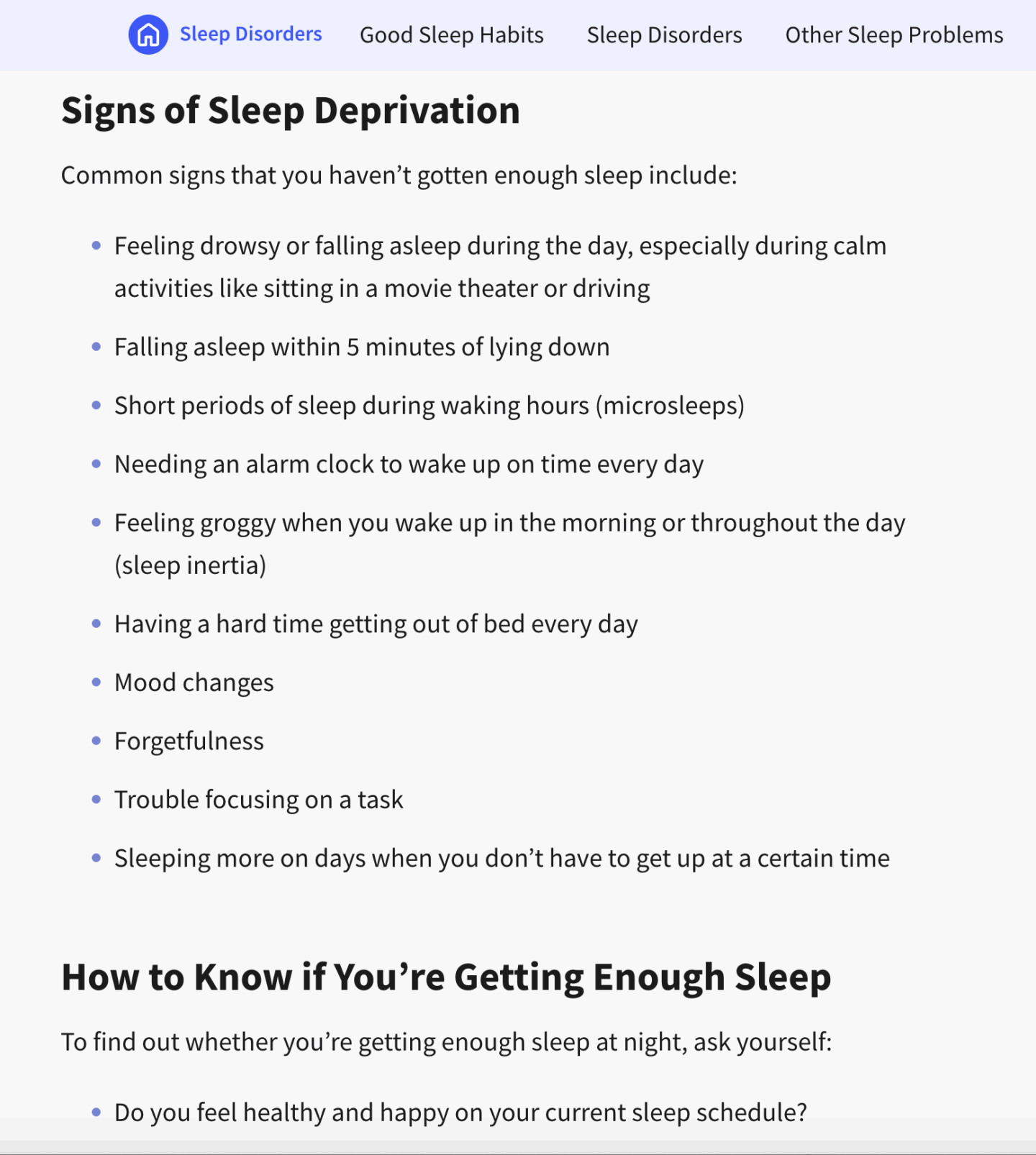
3. Build Brand Authority Through Mentions, Social Proof, and UGC
Backlinks have long been a cornerstone of SEO. Today, AI-powered search tools look beyond links and consider a wider range of authority signals—especially brand mentions across the web.
According to Ahrefs, brand mentions show a stronger correlation with AI visibility (0.664) than traditional backlinks (0.218). This means that even unlinked references, customer discussions, and reviews can significantly boost your brand’s credibility in AI-driven results.
A recent analysis by Semrush of over 150,000 AI-generated citations underscores this shift. The most frequently cited sources in AI responses aren’t limited to high-authority news outlets — they often include community-driven platforms and review-based content.
- User-Generated Content (UGC) sites such as Reddit.
Be mindful of Reddit’s anti-marketing sentiment — your commentary must avoid feeling overly promotional to gain traction in these spaces.
- Social media like Instagram, Facebook, and LinkedIn.
These networks are invaluable for local businesses. Activating local pages, prioritizing local SEO, and encouraging user-generated content are key to maximizing generative engine optimization.
- Ratings and reviews platforms such as Trustpilot, Yelp, or G2.
Key authority signals for AI include authoritative list mentions (e.g., your brand appearing in ‘Top X’ or ‘Best of’ articles), customer reviews, and formal recognitions such as awards, accreditations, or affiliations. While AI systems may weigh these factors differently, they tend to follow similar patterns.
Of these, authoritative list inclusion is the most consistently cited across systems.
4. Shift Your Focus from Keywords to Answering Long-Tail Questions
The way people interact with AI chatbots is different from traditional search queries. Users are often asking specific, conversational questions or seeking solutions to complex problems – essentially long-tail queries that go beyond simple keywords.
To improve your rank in AI search, align your content strategy with the questions users are actually asking on these AI platforms.
The Rise of Long-Tail Queries
- As shown in one Semrush study, 70% of all queries submitted to ChatGPT are not either informational or navigational searches, but go directly to the specific long-tail prompt stage.
- Notably, Semrush has observed that AI Overviews are more likely to appear for long-tail, low-difficulty queries rather than high-volume, transactional keywords.
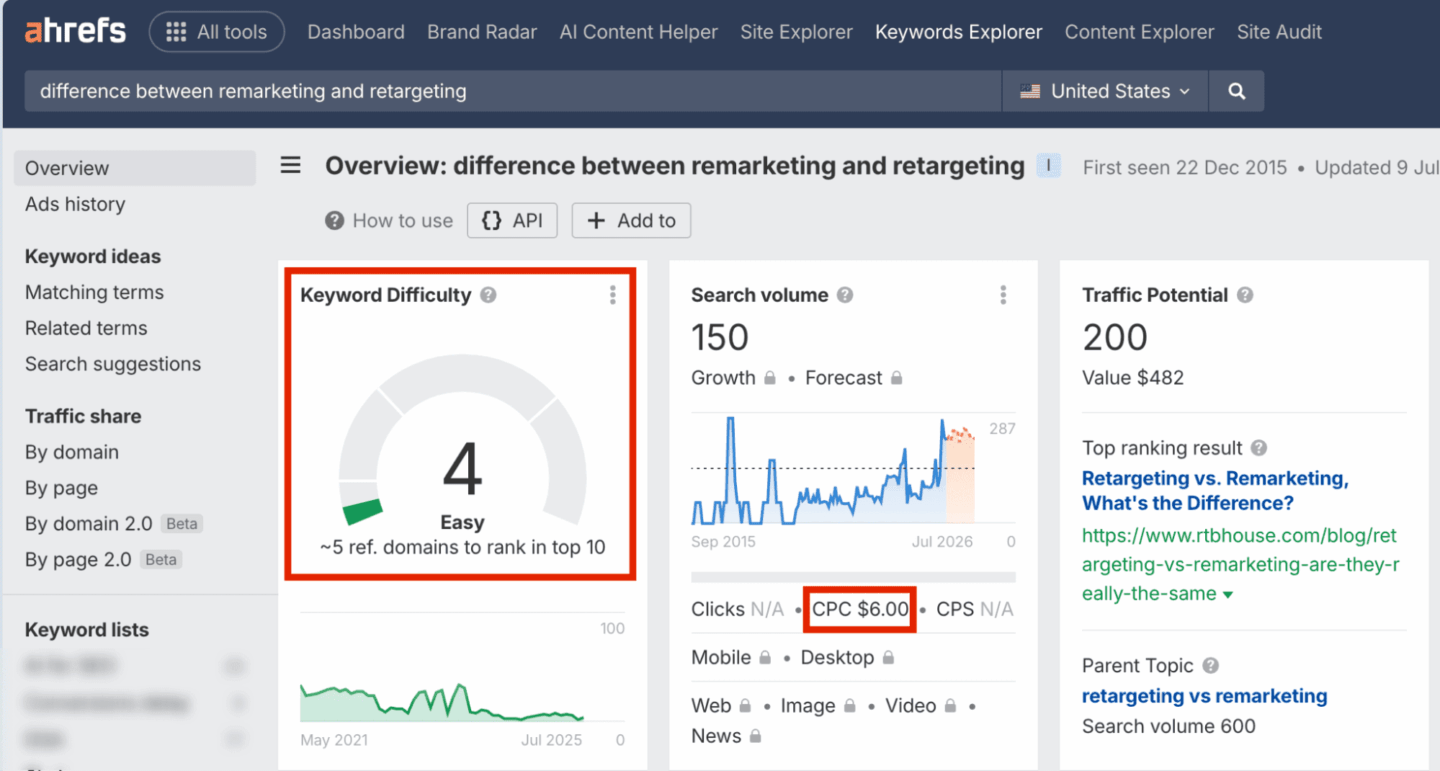
Actionable Tactics
- Research AI-style queries related to your industry using traditional SEO tools like AlsoAsked, Answer the Public, and Google’s “People Also Ask” suggestions.
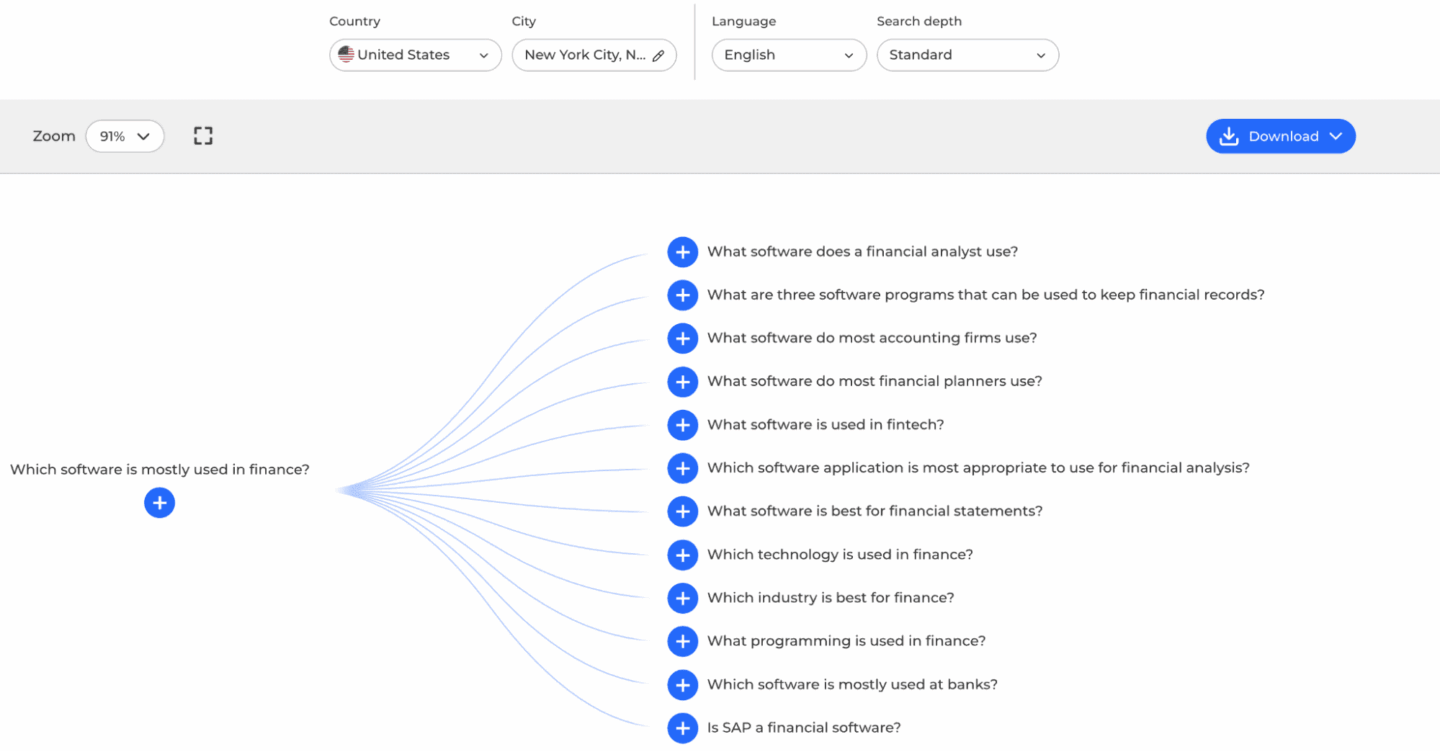
- List out the high-impact prompts in your niche (e.g., “top generative engine optimization strategies for AI visibility” ) and create prompt intent clusters — specific groups of questions that users ask about your topic.
Example: The SaaS company Zapier has excelled at this strategy. They create blog posts and knowledge base articles targeting extremely specific automation questions (the kind of long-tail queries their users have). If you search on AI or Google for something like “How to post to Facebook from an RSS feed automatically,” you’re likely to see Zapier’s guide on that topic.
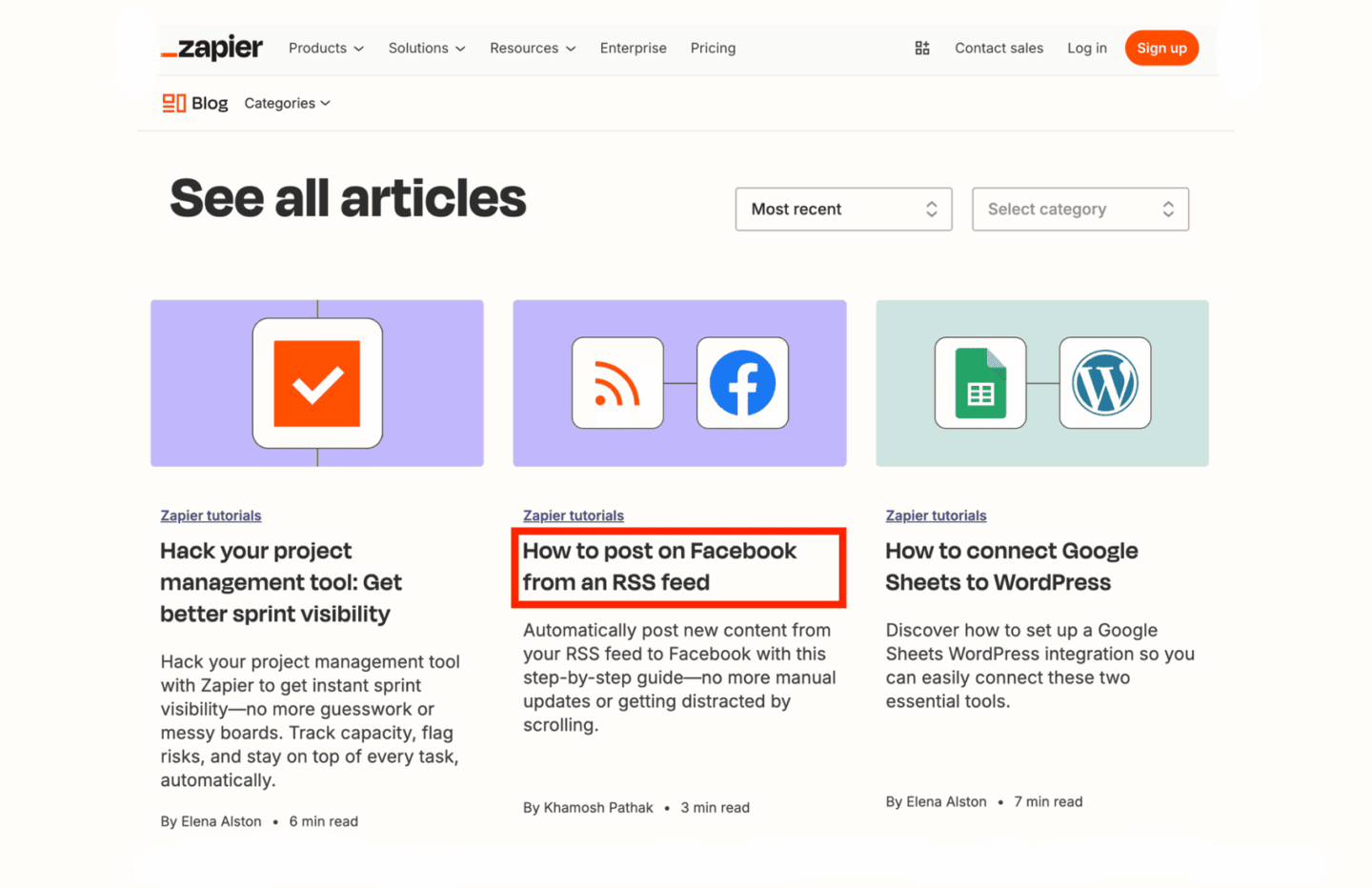
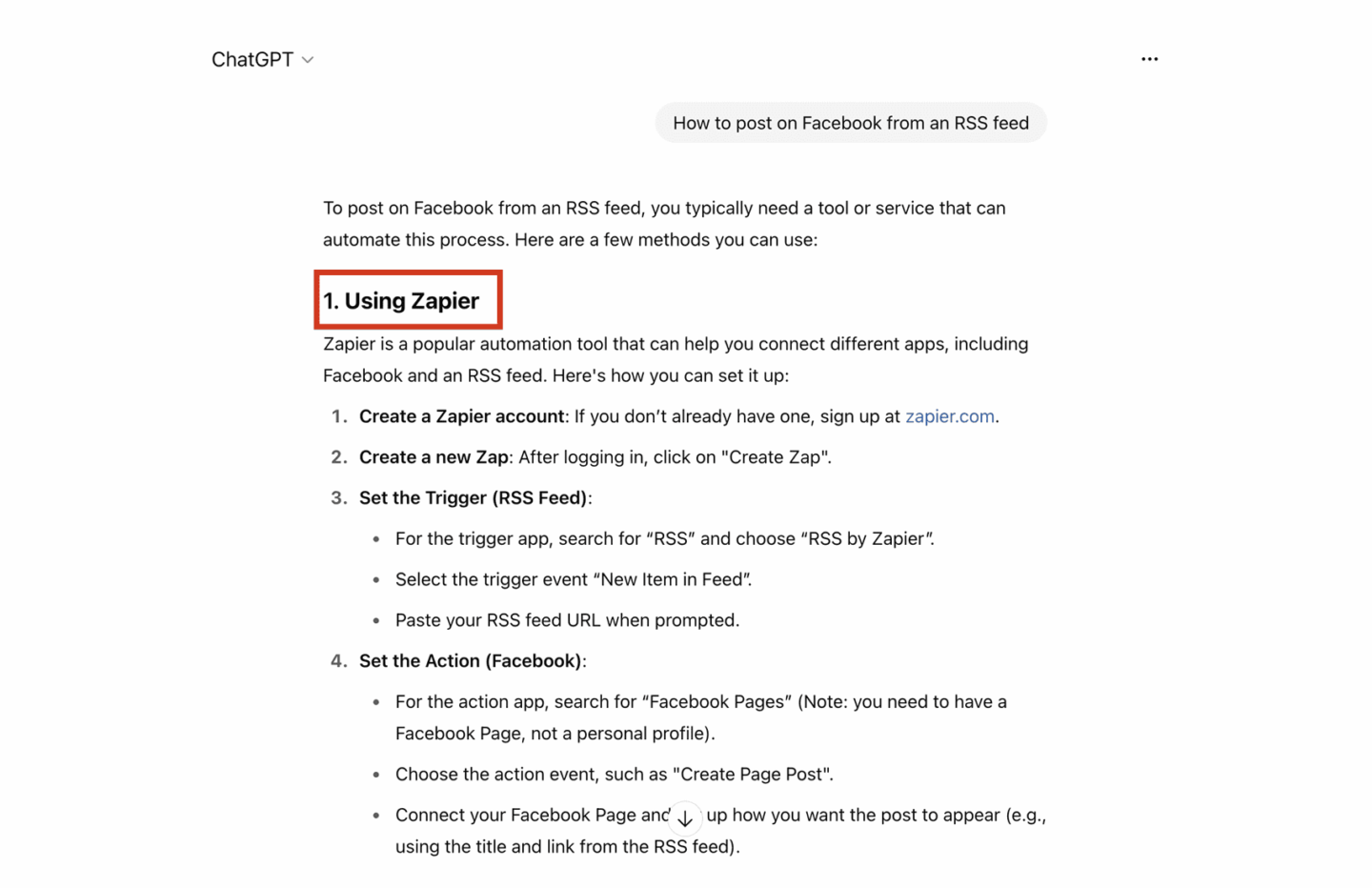
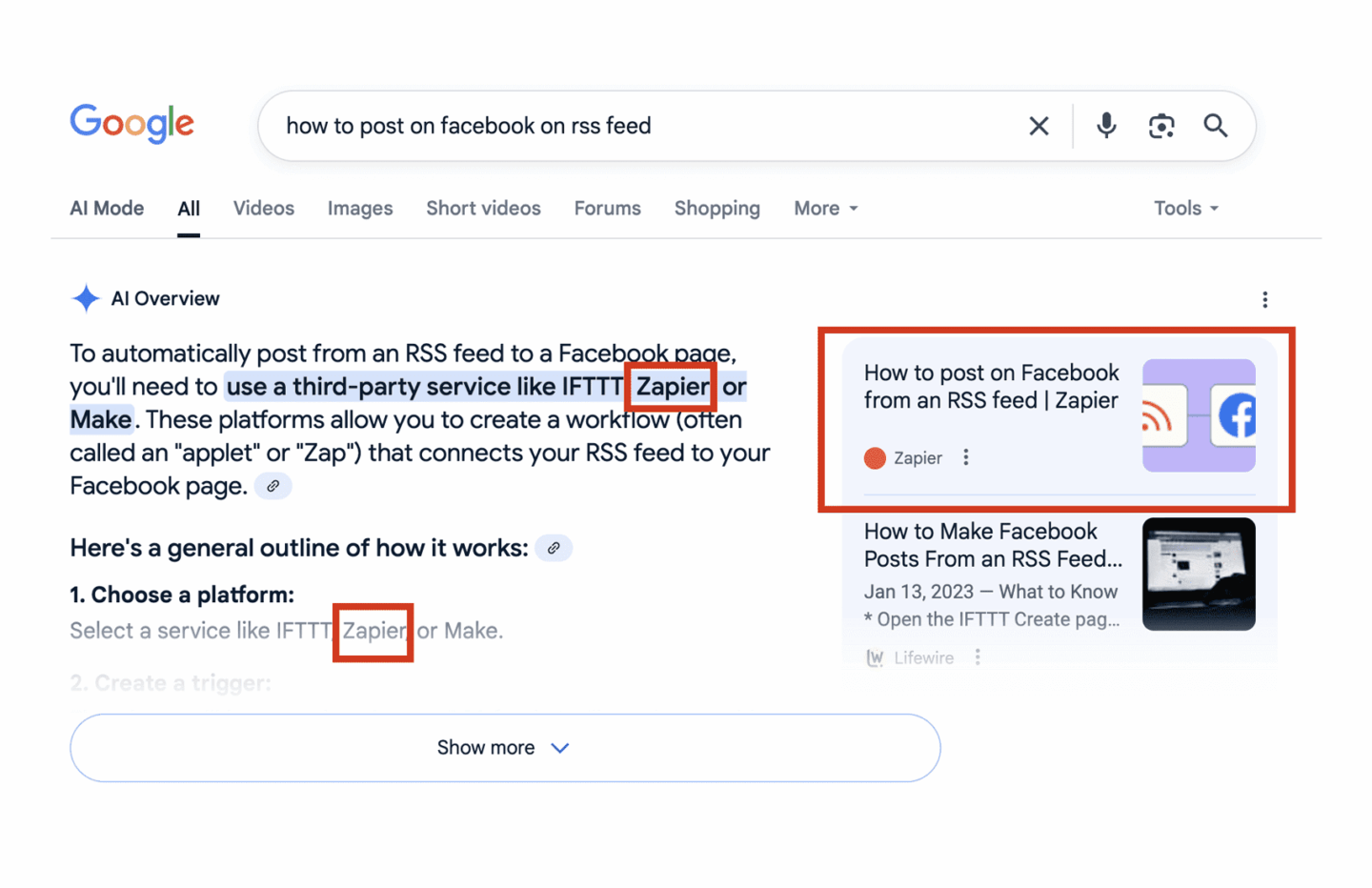
5. Create Rich Media Content
AI tools are increasingly rewarding multi-modal content that helps break up walls of text. Incorporating visuals, infographics, and videos not only enhances user engagement but also supports Generative Engine Optimization.
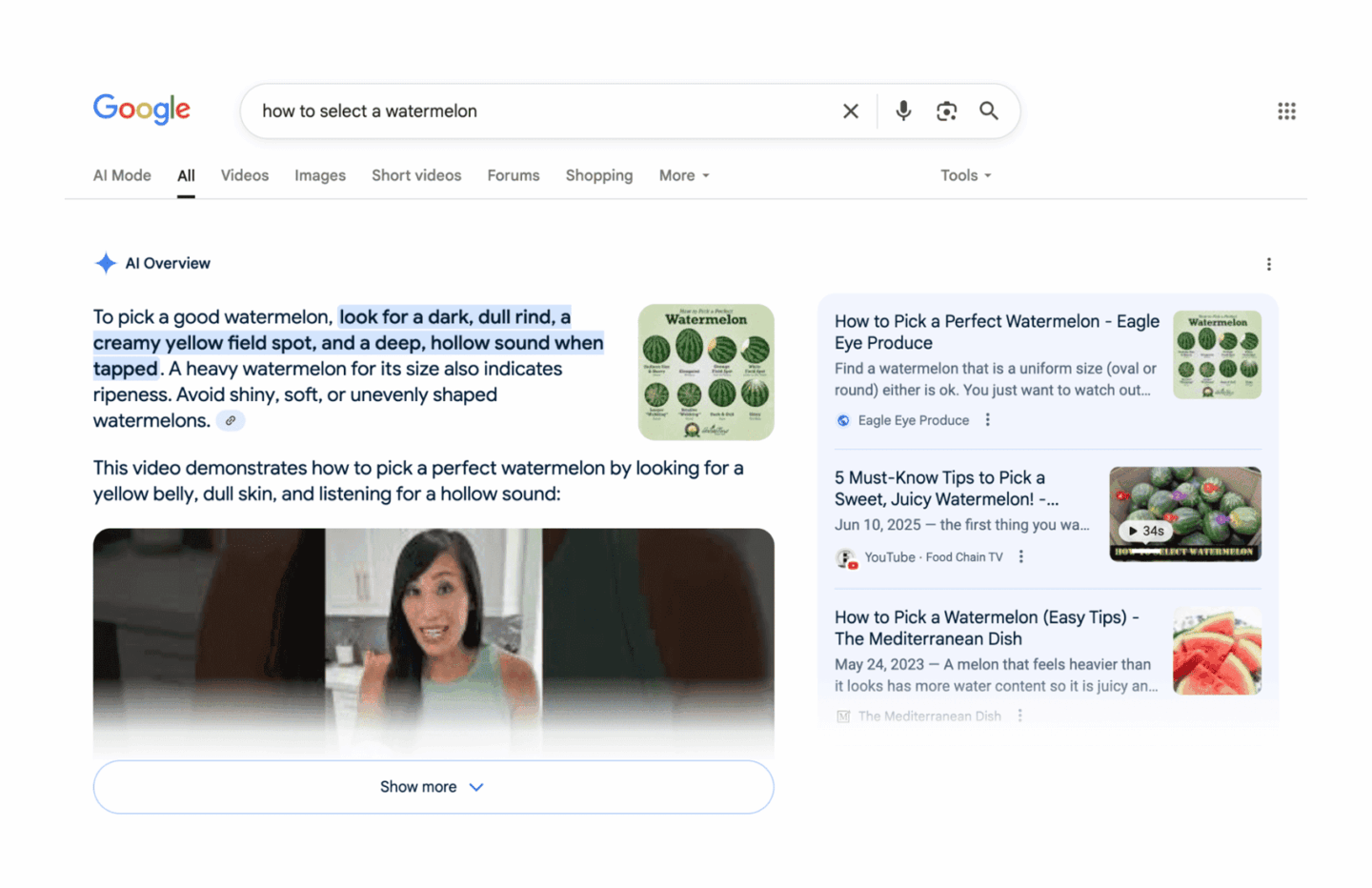
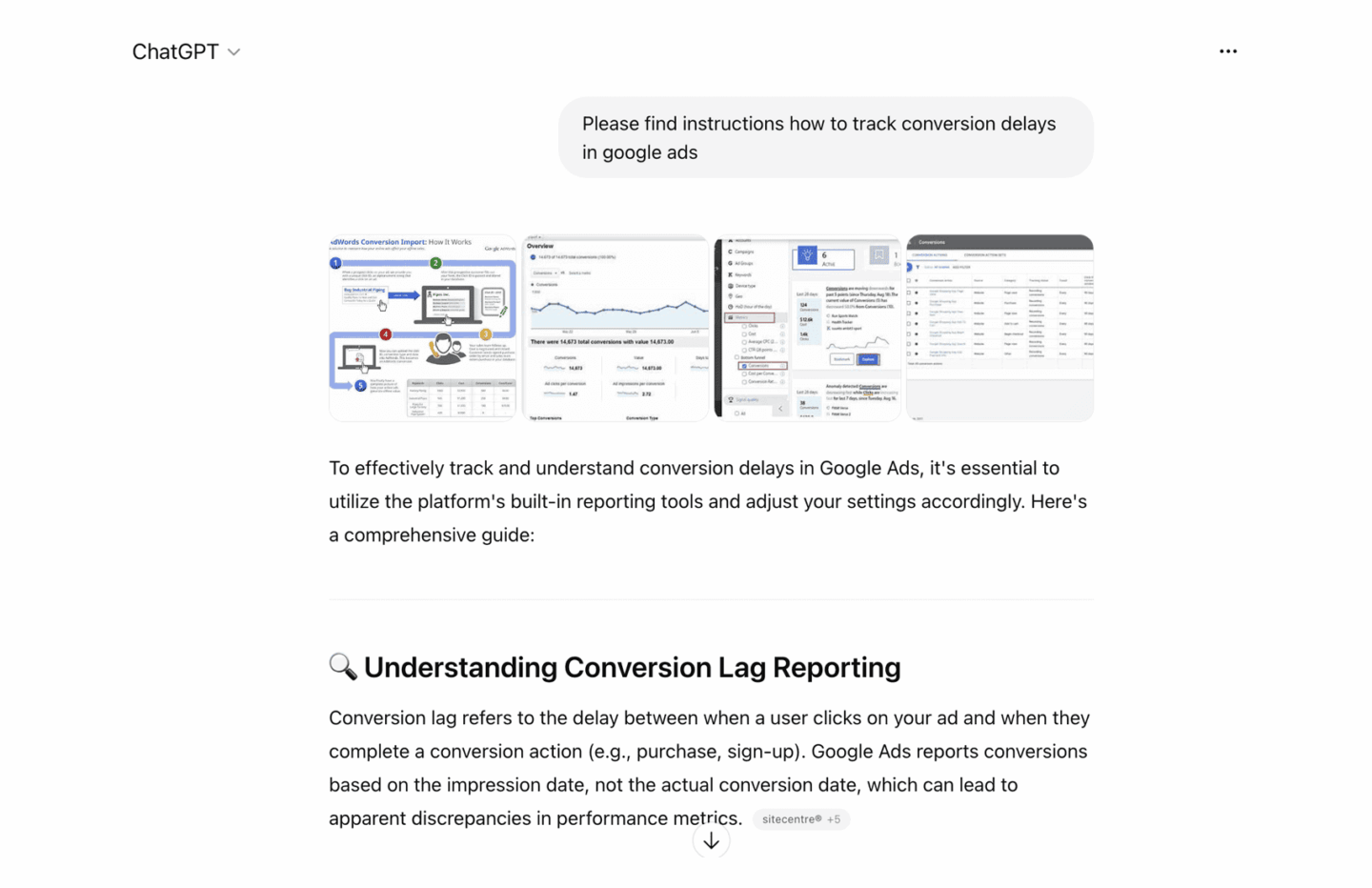
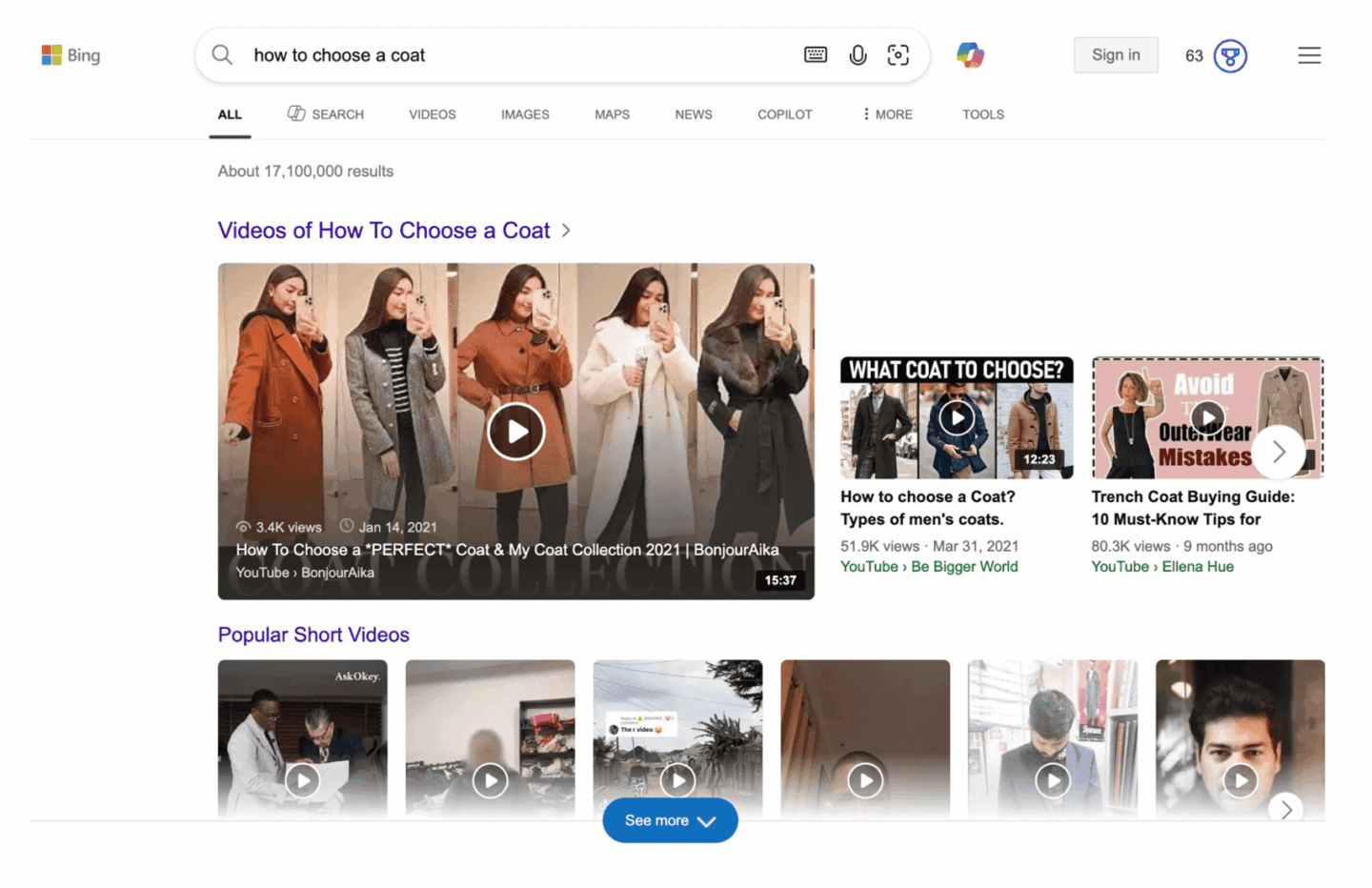
The Role of Videos in AI Citations
Videos are often prioritized by AI when search intent indicates that users prefer them over text. In 2025, the following content categories saw the highest increase in YouTube citations within Google’s AI Overview.
Optimizing Content for AI
- Create a YouTube video that directly answers the same question as your blog post — and embed it within that post. While this may require more effort, it positions you as a topical authority across AI platforms.
- Use descriptive alt text and captions for all images. These help both AI systems and users understand the content.
- Provide transcripts for videos and include timecodes. AI often cites video content from specific timestamps, allowing users to quickly access the most relevant part of the video.
- Link back to your main site in the video description if you publish on YouTube.
- Use comparison tables that clearly identify important features or specifications, particularly for e-commerce content. Tables are easily parsed by AI and can be directly used in AI responses.
- Organize your content into modular snippets, such as Q&As or TL;DRs (Too Long; Didn’t Read). These structured blocks of content make it easier for AI to extract relevant information.
How to Measure Success in Generative Engine Optimization
The way we have measured success traditionally with SEO metrics no longer tells the whole story with LLM search. The AI systems pull answers from multiple, often opaque, sub-searches — making it difficult for marketers to track performance through rankings alone.
Visits are becoming less relevant; brand visibility and share of voice are now the primary indicators of performance.
Key Metrics to Track
AI Citations
Citations pertain to how often your brand is mentioned on multiple platforms, whether linked or unlinked. Tools such as Ahrefs, BuzzSumo, and Semrush offer features to monitor both linked and unlinked brand mentions.
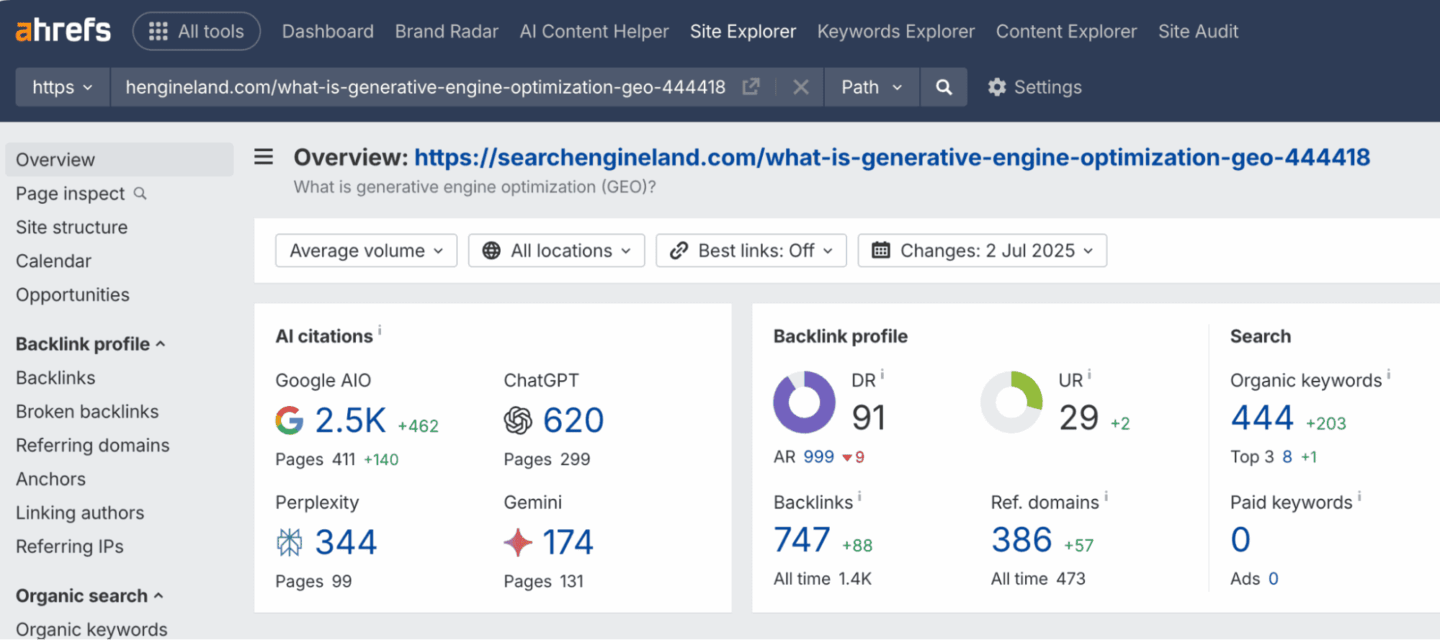
Competitive Benchmarking
Compare your share of market and sentiment against competitors. With tools like Semrush, you will be able to see how your competitors are tracking across AI systems and adjust your content and approach based on their performance.

Final Thoughts
As the pace of change in digital marketing accelerates, it opens up some questions for businesses: Are we truly serving our audience’s needs, or are we just chasing rankings?
With AI placing a premium on authentic expertise and practical value, your content strategy needs to reflect relevance and expertise in order to connect with your audience meaningfully.
Stay ahead in the evolving AI landscape with key marketing insights from our blog.


